长津湖战役:陆战一师师长史密斯派40辆坦克死守水门桥,宋时轮严令:不惜一切代价把桥炸掉!
Oct 11, 2021
The battle of the Chosin Reservoir
By Ned Forney | U.S. Marine Corps Forces, Korea
10/14/2021
It’s a pivotal event of the 20th century.
The Battle of Chosin, or “Changjin” as it’s called in Korea, a two-week-long bloodbath pitting 30,000 US, ROK, and British troops against 120,000 Chinese soldiers, was a defining moment of the Korean War.
Fighting in the winter of 1950 in bitter cold and brutal terrain, men endured severe frostbite, sleepless nights, and total mental and physical exhaustion. Below-zero temperatures, snow-covered mountains, icy roads, and wind-swept cliffs made every skirmish, firefight, and attack a nightmare beyond the men’s wildest dreams.

If You Stopped Moving, You Froze
With tens of thousands of young Americans and Chinese locked in eye-to-eye, hand-to-hand combat in the desolate, freezing mountains surrounding the Chosin Reservoir, the death toll soared. Even men with minor wounds or injuries frequently died. If you stopped moving, you froze.
The terrain and weather were so bad that Oliver P. Smith, the commanding general of 1st Marine Division, the largest American unit engaged at Chosin, said the mountains of North Korea were “never intended for military operations.” And every man who fought there would agree.
To most of the soldiers and Marines who found themselves at the frozen reservoir from November – December 1950, the terrain looked more like the set of a Himalayan mountain-climbing movie than a place to fight. But fight they did.They Just Kept Coming With tens of thousands of disciplined and determined white-clad Chinese soldiers attacking every night to the eerie cacophony of blaring bugles, shrieking whistles and clashing cymbals, the Americans, Brits and Koreans fought courageously. Beating back wave after wave of Chinese attackers, the UN forces barely held on.
The Chinese, despite outdated weapons and inadequate food, supplies, and ammunition, just kept coming. When a Chinese soldier went down, American veterans recalled, dozens more suddenly appeared.
Apr 13, 2014
By late November 1950, 1st Marine Division and 31st Regimental Combat Team, surrounded and vastly outnumbered, were on the verge of annihilation. As casualties mounted, the generals realized there was only one way to avoid a catastrophic defeat: break out to the sea.
Attacking In Another Direction
Over the next 5-7 days, the Americans fought, or as O.P. Smith said, “attacked in another direction,” down a winding, treacherous, snow-packed road to Hungnam, a North Korean port 70 miles away. Through extraordinary willpower, exceptional war-fighting skills, and countless acts of valor, US Marines and soldiers escaped the Chosin trap.
By the time US forces, with thousands of North Korean refugees in tow, reached the evacuation beaches, nearly 6,000 Americans were dead or missing; thousands more were wounded. None of the men who survived the horrific battle would ever be the same. Today they are called “The Chosin Few.”
Mao’s attempt at destroying 1st Marine Division, however, had come at a high price. The communist dictator had lost an estimated 50,000 soldiers, including his eldest son, and had learned to never again underestimate the American fighting man.HOnoring Chosin Veterans Recently I had the privilege of meeting two US Marines and four ROK soldiers who fought at Chosin. In their late eighties and early nineties, the former warriors were being honored at a ceremony held in downtown Seoul.
Along with thousands of people from throughout Korea, they were part of an event that paid tribute to the courageous soldiers, sailors, airmen, and Marines who suffered, sacrificed, and died in the remote mountains of North Korea in 1950.
As the six elderly men slowly came to the stage, some with canes and others with the assistance of young ROK soldiers or Marines, I couldn’t help but think of the thousands of Americans who had left their loved ones and friends 68 years ago, never to return. Men like Bob Reem, Eddie Thorn, and Harvey Storms, who sacrificed their lives so that others might live.
As the veterans returned to their seats and looked out into the crowd and the bustling streets of Seoul, it was a bittersweet moment. They later explained that they had all lost friends at Chosin and would never forget their brothers in arms who died fighting for South Korea’s freedom.
As the Korean War Memorial in Washington, DC, reminds us, “Freedom Is Not Free.”
Story by Ned Forney
Jul 8, 2018
On July 8, 1950, President Truman named World War II hero General Douglas MacArthur the commander of U.S. and other forces in Korea. Lee Cowan reports.
Nightmare at the Chosin Reservoir
By Matthew J. Seelinger, Chief Historian
10/14/2021
In late November 1950, a conclusion to the Korean War appeared to be close at hand. U.S., Republic of Korea (ROK), and various U.N. units had advanced deep into North Korea in an attempt to destroy any remaining North Korean People’s Army (NKPA) units and reunite Korea under one government. Some units had even reached the Yalu River, which separated Korea from Communist China.
But just as U.N. forces launched what was hoped to be the final offensive, hundreds of thousands of Communist Chinese soldiers poured into Korea, overwhelming the U.N. troops and completely changing the nature of the war. Fighting in extreme cold and over rugged terrain, the Americans and their allies were forced to retreat south down the Korean peninsula, suffering heavy casualties along the way.
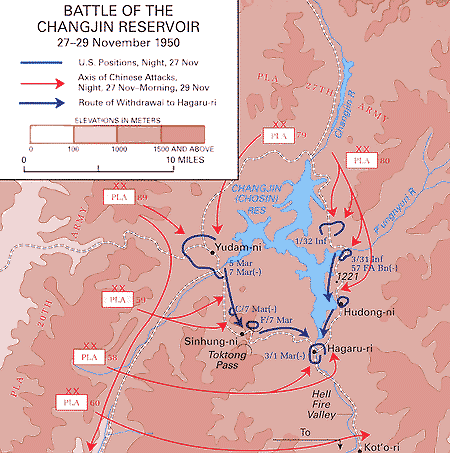
For one U.S. Army unit, the intervention of Chinese Communist Forces (CCF) resulted in absolute disaster. The 31st Regimental Combat Team, better known as Task Force MacLean (later known as Task Force Faith), comprised of elements of the 7th Infantry Division, was virtually annihilated east of the Chosin Reservoir. The experiences of the American soldiers who fought and died in the frigid cold of the Chosin area proved to be some of the most harrowing and tragic in the history of the U.S. Army.
In late November 1950, Task Force MacLean and the rest of the 7th Infantry Division were part of the U.S. Army’s X Corps, under the command of MG Edward M. Almond. X Corps had been steadily advancing up the eastern side of the Korean peninsula and was pressing on towards the Yalu.
On 24 November, the Eighth Army, under the command of LTG Walton H. Walker, which had been advancing north along the western side of Korea, went on the offensive. GEN Douglas MacArthur, commander of all U.N. forces in Korea, hoped this offensive would finally end the war, hopefully by Christmas. Yet, MacArthur and many on his staff were soon to make one of the worst military intelligence blunders in U.S. Army history. Ignoring reports of contact with CCF troops, MacArthur ordered the Eighth Army and X Corps to push on to the Yalu.

On the night of 25 November, one day after Eighth Army began its offensive, the CCF struck Eighth Army with massive numbers of troops. Thousands of Chinese soldiers, armed with burp guns and grenades, with bugles blaring, swarmed the American positions. Several American units were overrun and destroyed. The CCF onslaught took MacArthur and the U.N. forces completely by surprise and almost instantly changed the tide of the war. Soon, Eighth Army was in full headlong retreat southward.
Despite the CCF attack, the X Corps offensive scheduled for 27 November proceeded according to plan. The offensive called for the corps to strike west towards Mupyong, northeast of Kunu in the CCF rear, cut the Chinese supply lines, and possibly envelop the CCF in front of Eighth Army. The attack would be spearheaded by the 1st Marine Division, under the command of MG O.P. Smith, which would advance up the west side of the Chosin Reservoir, with the 7th Infantry Division (led by Task Force MacLean) along the east side of Chosin and the 3rd Infantry Division guarding the Marines’ flanks.

Task Force MacLean, under the command of COL Allan D. “Mac” MacLean, commander of the 31st Infantry Regiment, had been formed in mid-November to relieve elements of the 1st Marine Division east of the Chosin Reservoir. MacLean, a 1930 graduate of West Point, had served as a staff officer in the European Theater during World War II. After the war, he commanded the 32nd Infantry in Japan. Later assigned to Eighth Army’s G-3 section, MacLean served as Walker’s personal “eyes and ears” during the early days of the Korean War. In early November 1950, he eagerly accepted command of the 31st Infantry, a unit he had served with in the Philippines early in his career.
Task Force MacLean consisted of the following units: the 2nd and 3rd Battalions, 31st Infantry (2/31 and 3/31); the 31st Tank Company; the 1st Battalion, 32nd Infantry (1/32), under the command of LTC Don C. Faith; the 57th Field Artillery Battalion, equipped with 105mm howitzers; and a platoon of eight antiaircraft vehicles (M19s with dual 40mm cannon and M16 quad-.50 halftracks) from D Battery, 15th Antiaircraft Artillery (Automatic Weapons) Battalion. In all, Task Force MacLean numbered about 3,200 men, including 700 ROK soldiers.
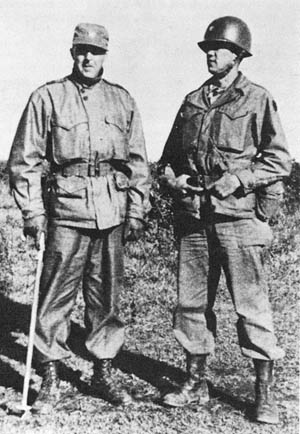
On 25 and 26 November, the lead elements of Task Force MacLean, Faith’s 1/32 Infantry, relieved the 5th Marines, which redeployed to join the rest of the 1st Marine Division along the west side of Chosin. However, due to delays with the rest of the task force’s redeployment, the 1/32, which occupied the 5th Marines forwardmost positions, stood alone without artillery support for a full day.
Don Faith, commander of the 1/32 Infantry, was considered one of the most promising officers in the Army. The son of a retired brigadier general, he had been handpicked from the Officer Candidate School at Fort Benning by then MG Matthew B. Ridgway to serve as his aide-de-camp. He served with Ridgway throughout Europe and jumped with the 82nd Airborne Division on D-Day. In battle, Faith was considered a virtual clone of Ridgway: intense, fearless, aggressive, and unforgiving of error or caution.
Most of the remaining units that comprised Task Force MacLean arrived on the east side of Chosin on 27 November. MacLean was among the first to arrive and immediately jeeped forward to confer with Faith. He confirmed with Faith that the task force would attack north the following day with whatever forces were on hand and that the 1/32 would spearhead the attack.
MacLean positioned forces north to south in their approximate order of arrival: 1/32 Infantry; MacLean’s forward command post (CP); the 31st Heavy Mortar Company; the 3/31 Infantry; A and B Batteries of the 57th FAB; the 57th FAB CP and the eight A/A vehicles; and finally, the 31st Infantry’s headquarters, located in a schoolhouse in the village of Hudong, and the twenty-two tanks of the 31st Tank Company. C Battery, 57th FAB, and the 2/31 Infantry were lagging behind and had not yet left the Pungsan area.
Late in the day MacLean ordered the 31st’s Intelligence and Reconnaissance Platoon to scout enemy positions. The platoon was ambushed in the hills around Chosin by CCF troops and every soldier was either killed or captured.
That night, MacLean laid out his final plans for the next day’s attack with the 7th ID assistant division commander, BG Hank Hodes. He then went forward to finalize them with Faith.
While MacLean and Faith remained confident, Task Force MacLean already faced serious problems. In addition to the disappearance of the I&R Platoon, communications between the scattered units were poor at best. There was no time to lay landlines and radio communications were virtually nonexistent. Furthermore, the task force was not in radio contact with the 7th ID HQ at Pungsan or the Marines in Hagaru-ri. The scattered units of Task Force MacLean were dangerously isolated, not only from the rest of the 7th ID and the Marines, but also from each other.
Also, unbeknownst to the Marines and Task Force MacLean, massive numbers of CCF troops were preparing to attack the dispersed units of X Corps on the night of the 27th. Three CCF divisions (59th, 79th, and 89th) were to hit the Marines at Yudam-ni and Hagaru-ri, along with the 7th Infantry, 3rd Infantry Division, and farther south. One division (80th) would attack Task Force MacLean.
On 27 November, the X Corps offensive began with the 5th and 7th Marines attacking from Yudam-ni along the west side of Chosin. In light of the rugged terrain, bitterly cold weather, logistical problems, and the situation facing Eighth Army, the X Corps offensive, in the words of one historian, “ranks as the most ill-advised and unfortunate operation of the Korean War.” The Marines, reluctant to carry out the attack in the first place, advanced only 1,500 yards before they met stiff CCF resistance and suffered heavy casualties.
Later after dark, in zero-degree weather, the CCF divisions struck. Two divisions hit the 5th and 7th Marines frontally while a third cut the road between Yudam-ni and Hagaru-ri. Elements of another division also struck the 7th Infantry. The situation quickly became desperate for the American forces around Chosin.
East of the Chosin Reservoir, the situation was just as chaotic. During the early evening hours, the CCF 80th Division encircled the unsuspecting units of Task Force MacLean. At about 2200, the division attacked out of the darkness, with CCF soldiers blowing bugles and screaming wildly. The isolated units, cut off from each other, fought for their lives.
Faith’s 1/32 Infantry was hit first along the north side of its perimeter. Marine CPT Edward P. Stamford, a forward air controller assigned to the task force, took command of A Company after its commander was killed and also called in Marine air strikes. While Marine aircraft and the troops of the 1/32 inflicted heavy casualties on the CCF troops, the battalion suffered over one hundred casualties.
Several miles south, the situation was similar. The CCF struck the 3/31 Infantry and two batteries of the 57th FAB, overrunning much of their perimeter. Most of the senior officers were killed or wounded. The battle raged on through the night, with the CCF finally withdrawing at dawn for fear of American air attacks. Like the 1/32, the 3/31 and 57th FAB suffered heavy casualties and one of the A/A vehicles was destroyed. Furthermore, the 31st’s medical company was wiped out. Back at the 31st’s rear CP in Hudong, BG Hodes heard heavy gunfire to the north and immediately ascertained something was wrong. He quickly ordered CPT Robert E. Drake to take two platoons of the 31st Tank Company forward to the 3/31 and 1/32 perimeters. Drake’s rescue column, however, soon ran into trouble. Some tanks skidded out of control on the icy road, while others became hopelessly stuck in mud. The column was then attacked by CCF troops with captured American bazookas. Two tanks were knocked out and a wild fight ensued as Chinese swarmed the tanks and attempted to open the hatches. Two more tanks become mired and had to be abandoned. Drake ordered his remaining twelve tanks back to Hudong. Once the tanks returned, Hodes quickly realized Task Force MacLean was in serious trouble. He borrowed one of the tanks and rode to Hagaru-ri to get help.
At about 1300 hours on 28 November, MG Almond flew into the 1/32 perimeter to confer with MacLean and Faith. Seemingly unaware of the crisis at hand, Almond announced that Task Force MacLean would press on with the attack, claiming that the Chinese facing them were nothing more than the remnants of retreating units. He then added, “We’re going all the way to the Yalu. Don’t let a bunch of Chinese laundrymen stop you.” MacLean made no objection to Almond’s order, despite the fact that the task force was in no position to attack. Both Almond and MacLean would later be criticized for their failure of command east of Chosin. Almond never fully appreciated the enemy’s strength, while MacLean failed to give Almond a clear picture of the situation facing his own task force.
At around midnight on 29 November, the CCF 80th Division attacked Task Force MacLean once again. The fighting was savage, often hand to hand. At around 0200, MacLean, still in the 1/32 perimeter, ordered the battalion to withdraw south in the darkness to the 3/31’s perimeter, taking all weapons and wounded with them. The move was to be a temporary one to consolidate forces before attacking, as ordered by Almond, the following day.
After disabling and abandoning several vehicles and loading the wounded into trucks, MacLean, Faith, and the 1/32 began moving south at 0500. Darkness and falling snow made the maneuver difficult, but fortunately, the CCF did not attack. Along the way, the task force gathered up the 31st Heavy Mortar Company, which was located halfway between the 1/32 and 3/31 and had supported the two battalions during the CCF attacks.
By dawn, the battalion reached the 3/31 perimeter, only to find it under heavy enemy attack. Without communications, attempting to enter the perimeter would be an extremely hazardous operation. Furthermore, the Chinese had created a roadblock at a bridge on the road leading into the perimeter. Faith led a party of men that successfully drove the CCF off the bridge and cleared the block. MacLean then came forward in his jeep. He spotted a column of troops whom he believed were his overdue 2/31. The troops within the 3/31 perimeter, however, began firing on the column, much to the dismay of MacLean. The troops were actually Chinese. MacLean, still believing they were American, ran towards them, shouting, “Those are my boys.” He dashed out onto the frozen reservoir towards the perimeter, attempting to stop what he believed was friendly fire. Suddenly, CCF troops concealed near the bridge fired on MacLean, hitting him several times. MacLean’s men watched in horror as an enemy soldier grabbed him and dragged him into the brush.
Unfortunately, there was no time to attempt a rescue of MacLean. Faith had to focus on getting his men into the 3/31 perimeter. With the men crossing the frozen stream on foot and the vehicles with the wounded dashing across the bridge, most of the column made it into the perimeter.
Once in, Faith surveyed the carnage. Hundreds of American and CCF dead littered the ground. The 3/31 had suffered over 300 casualties and its L company had ceased to exist. With MacLean gone, Faith assumed command and did his best to strengthen the perimeter. Marine air controller CPT Stamford also called in for Marine close air support and an airdrop for desperately needed supplies, especially 40mm and .50 caliber ammunition. Faith then sent out search parties to look for MacLean, with no luck. MacLean was declared missing, but later, an American POW stated that MacLean died of wounds on his fourth day of captivity and was buried by fellow POWs. He was the second and final American regimental commander to die in Korea.
On the morning of the 29th, Drake’s 31st Tank Company made another attempt to reach the 3/31 perimeter, only to be driven back to Hudong by CCF troops dug in on Hill 1221. For the remainder of the day the newly designated Task Force Faith remained in position. With nearly 500 wounded, the force was in no position to carry out the attack ordered by Almond. Yet, Faith had no authority to order a withdrawal. The situation was helped somewhat by Marine close air support and an airdrop of supplies, although the drop lacked 40mm and .50 caliber ammunition. A Marine helicopter also flew out some of the most serious wounded. Task Force Faith’s situation, however, remained desperate, particularly since it had still had not established communications with the Marines or the 7th ID HQ.
MG Dave Barr, commander of the 7th ID, flew in by helicopter to bring Faith more bad news. All the units of X Corps, including Task Force Faith, now under operational command of the Marines, were to withdraw. The Marines would provide Faith with air support, but other than that, the men would be on their own. To make matters worse, the task force was burdened with wounded, which would make their withdrawal even more difficult. Furthermore, the 31st’s CP, the 31st Tank Company, and the HQ Battery, 57th FAB, had evacuated Hudong for Hagaru-ri, further isolating Task Force Faith.
At about 2000, the CCF launched another attack. While killing large numbers of Chinese, Task Force Faith suffered another 100 casualties. Faith soon concluded his force could not survive another major attack. He summoned his remaining officers and told them to prepare to move out at 1200. The task force, after destroying its artillery, mortars and other equipment, began to move south, carrying 600 wounded in thirty trucks.
With a twin 40mm gun vehicle leading the way, the column began to move at around 1300 hours. It immediately came under fire. Stamford called in Marine air support, but the lead plane’s napalm canisters hit the front of the column, engulfing several soldiers and creating panic throughout the task force.
The situation quickly grew worse. Heavy fire from the flanks killed many of the wounded in the trucks. The fire grew more intense as the column reached Hill 1221, which dominated the surrounding area. At the north base of the hill, the CCF had blown a bridge, forcing a two-hour delay as the lead A/A vehicle had to winch the thirty trucks across a stream. A roadblock then held up the task force, while the CCF troops on the hill kept up their heavy fire. There was only one way to break through: take Hill 1221. Several hundred men charged up the hill, including many of the wounded, some of whom said they preferred to die on the attack than while waiting in the trucks. Despite heavy casualties, the men drove the CCF off most of the hill. Many, however, simply kept going over the hill and down the other side, venturing out onto the frozen reservoir and walking towards Hagaru-ri.
The task force then ran into another block at a hairpin turn. Faith led an assault that cleared the enemy from it. However, he was struck by enemy grenade fragments and mortally wounded. Once Faith was lost the command structure of Task Force Faith collapsed. As the 1/32’s S-1, Robert Jones, described it, “When Faith was hit, the task force ceased to exist.” Faith would later be posthumously awarded the Medal of Honor.
While some such as Jones and Stamford tried to provide leadership, Task Force Faith quickly fell apart. Another roadblock, this one comprised of disabled tanks from the 31st Tank Company and other vehicles, furthered delayed the column. At Twiggae, the CCF had blown another bridge, forcing the column to attempt a risky crossing of a railroad trestle. All the while, the vehicles were under fire. Many men left the trucks to hide or tried to escape over the reservoir. Many died from wounds and exposure, or were captured.
Just north of Hudong, the task force ran into yet another roadblock. This spelled the end for Task Force Faith. The CCF brought heavy fire to bear on the column. CCF troops lobbed grenades and fired rifles into the trucks, killing masses of wounded. Those who could escape ventured out onto the reservoir and began the arduous march to the Marine lines at Hagaru-ri.
During the night of 1-2 December, survivors straggled into the Marine lines. Many came through a sector held by the Marine 1st Motor Transport Battalion. LTC Olin L. Beall, commander of the battalion, led a rescue mission across the ice by jeep, picking up over 300 survivors, many suffering from wounds, frostbite, and shock. In all just over 1,000 survivors reached the Marine lines, and of those, only 385 could be considered able-bodied. The survivors, along with other 7th ID soldiers, were organized into a provisional battalion and attached to the 7th Marines. Known as the 31/7, the battalion participated in the 1st Marine Division’s breakout from Hagaru-ri to the coast beginning on 6 December.
Jul 8, 2018
简介:本系列讲座从俄罗斯的远东战略谈起,讲解了《中苏友好同盟条约》对朝鲜战争的影响。从中苏关系的角度分析中国(毛泽东)参战朝鲜战争的动机。
主题:毛泽东·斯大林与朝鲜战争的起源
主讲:沈志华(华东师范大学国际冷战史中心主任、兼任北京大学历史系研究员、中国人民大学历史系研究员、华东师范大学历史系终身教授、中国史学会理事)
For years afterward, the saga of Task Force MacLean/Faith had been largely ignored. Many believed that the collapse and panic that engulfed the task force had brought great shame to the Army. Upon closer examination, the task force’s role in the Chosin battle proved to be much more noteworthy. Many historians now agree that Task Force MacLean blocked the Chinese drive along the eastern side of Chosin for five days and allowed the Marines along the west side to withdraw into Hagaru-ri. Furthermore, the task force destroyed the CCF 80th Division. In recognition of their bravery, Task Force MacLean/Faith was awarded a Presidential Unit Citation in September 1999.
For additional information on Task Force MacLean/Faith, please read: Roy E. Appelman, East of Chosin: Entrapment and Breakout in Korea; Clay Blair, The Forgotten War: America in Korea, 1950-1953; and Anthony Garrett, “Task Force Faith at the Chosin Reservoir,” in Infantry, (September-December 1999).
1956年美国拍摄的长津湖之战(美版英雄儿女)
《Hold Back the Night Allan Dwan》如同中国电影《英雄儿女》也是根据小说改编拍摄的。 所涉及的战争故事,就是大家耳熟能详的长津湖战役…
此片的整体思想是反战的,她涉及儿女情长,战场的残酷,战争创伤,人性的光芒等故事!
此片其实也是军迷该认真观看的。比较准确的用电影还原了美军及中国志愿军的战术及柳潭里方向的战斗细节…
PS:听不懂英文的没有关系,此片有字幕,大致可以看明白~~
《Hold Back the Night》是一部关于朝鲜战争的1956年美国战争片,根据曾在朝鲜担任战地记者的帕特-弗兰克1951年的小说改编。该片由艾伦-德万(Allan Dwan)执导;这是他与约翰-佩恩(John Payne)合作的第三部电影,也是他的第三部关于美国海军陆战队的电影,其他的是《两个美国佬在国外》(1944)和《硫磺岛的沙子》(1949)。
影片以倒叙的方式讲述了二战时期的海军陆战队中尉、朝鲜战争时期的上尉萨姆-麦肯齐携带的一瓶苏格兰威士忌的故事。他的女友安妮在1942年把这瓶酒送给了他,但告诉他要把它留给一个非常特殊的场合。她要求他在出征前娶她,但他不想冒险让她成为寡妇。在墨尔本休假的时候,萨姆遇到了凯蒂,并考虑与之交往,但当他得知她有一个可能是日本战俘或已经死亡的丈夫时,他离开了。当他回到安妮身边时,他厌恶地发现她已经有了一个少校作为爱慕者。然而,他们把事情弄清楚并结婚了。
在朝鲜战争期间,山姆所在的海军陆战队第一师第七团第二营E连正在追击逃亡的北朝鲜军队,并期待着回家。然而,山姆被他的上司告知,中国人已经参战,所以他们将不得不进行 “战斗撤退”。萨姆被命令为该团提供侧翼保护。
当天晚上,中国人以营为单位发动进攻,几乎占领了整个连队,但炮火把他们赶了回去。在接下来的几天里,撤退是一场伏击和损失不断增加的噩梦。他剩下的最后一名军官,库森斯中尉,也受了伤。最后,士兵们太累了,无法继续前进,所以山姆用他的那瓶苏格兰酒……作为激励,让他们重新加入他们的队伍。他们最终不得不放弃最后的几辆车,但自始至终,萨姆坚持不让任何一个伤员留下,即使他们不得不背着他们。在对付敌人的坦克时,萨姆被击中。一架美军直升机发现了他们,并能够疏散最严重的伤员,包括山姆。其余的人,连同托付给他们的瓶子,在埃克兰德中士的带领下到达友军阵地。一旦他们安全了,埃克兰德就把苏格兰威士忌给他们喝,但是没有人愿意喝,觉得这对他们来说是一种幸运。这瓶酒被还给了萨姆,他还在为一个重要场合保存它。
陆战1师为啥就能全身而退
12月1日,美军陆战1师已集中到下竭隅里,虽然遭受了九兵团的猛烈攻击,但第1、5、7团,第11炮兵团和坦克分团、第1工兵营建制完整不乱。
然而师长史密斯接到美10军军长阿尔蒙特下达的命令,陆战1师必须带着四千多名下竭隅里的朝鲜男女老少,向东海岸兴南港转移撤退。

从下碣隅里至真兴里,陆战1师必经架设在古土里水力发电站输水管道上的水门桥。陆战1师第1工兵营两次修复被20军60师爆破队炸毁的桥梁。
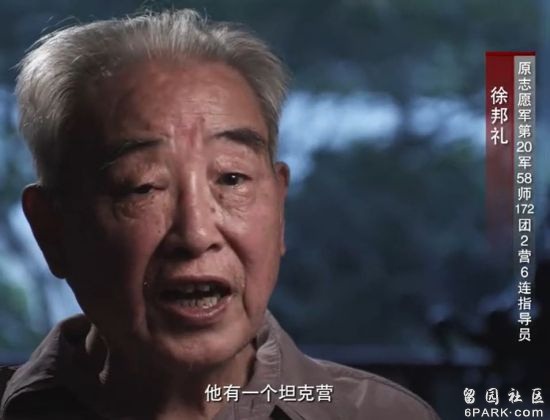
陆战1师的坦克分团在桥的南北两端部署了40辆坦克,成功击退了志愿军20军58师172团对水门桥的强攻。
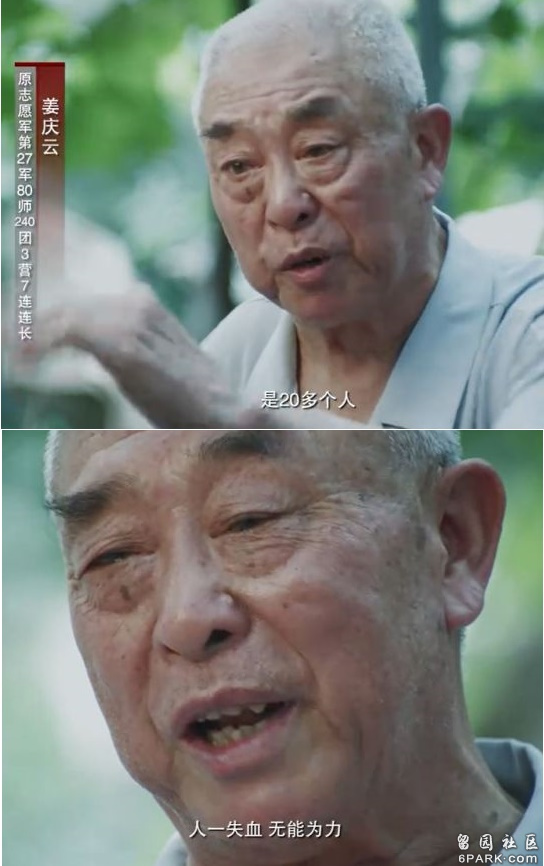
此时的20军已无力攻占或炸毁水门桥,兵团司令宋时轮下令27军80师240团组织一支20人的敢死队,12月6日晚240团敢死队第三次炸毁了水门桥。
陆战1师第1工兵营营长帕特里奇中校,从美军驻日基地要来了8套M-2的钢架桥梁,8日清晨美空军C-119运输机用巨型降落伞将钢架桥梁直接空投到水门水电站,当天下午4点左右,陆战1师工兵营在美10军第73工兵营的帮助下,成功搭建了一座载重50吨可承载重型装备包括坦克在内的的桥梁。
8日清晨,为了保证陆战1师第1工兵营安全架桥,师长史密斯组建了特遣分队,控制桥的南北两端的山头高地,这才发现附近山头上20军58师172团数百名士兵都已经冻硬了。
Oct 6, 2021
内容介绍:1950年11月5日,是中国人民志愿军跨过鸭绿江的第18天,中国人民志愿军在朝鲜人民军的协同下,取得了第一次战役的胜利,共歼敌15000余人,粉粹了”联合国军”,于11月23日感恩节前占领全朝鲜的计划。在此之后,美军迅速集中其全部侵朝部队兵力,开始发动了一次能”结束朝鲜战争总攻势”,企图将志愿军赶过鸭绿江,占领全朝鲜,并要在十二月二十五日前结束朝鲜战争……
Oct 3, 2021

Tel: 551-580-4856 | Email: F.WINNIE.S@GMAIL.COM
Oct 10, 2021
纪录片:《美国经历:长津湖战役》 Documentary: “The American Experience: The Battle of Changjin Lake”
Oct 5, 2021
Nov 27, 2015
Korea war, Chosin battle documentary.” CHOSIN TO HUNGNAM ” KOREAN WAR DOCUMENTARY CHOSIN RESERVOIR USMC MARINE CORPS
Mar 29, 2013
Best way to understand what’s the fuzz going in Korea right now is to go back and review the history to have a better insight about the origin of hostilities plaguing us until today.
东雷老评|关于《长津湖》,简单说几个点
作者:李东雷
10/05/2021

国庆长假里,电影《长津湖》很火爆。有读者看完电影后问我看了没,催我写点评论。可惜我没有看,也不打算看这电影。因为有一年看了《战狼II》之后,我就决定以后不看吴京演的电影,不管它的票房有多高。
关于长津湖战役,我两年前看过美国人拍的纪录片,当时写了影评《记录片里的《长津湖战役》比上甘岭更惨烈》。关于朝鲜,我去过两次,曾经写过一篇访朝日记《旧文:我的访问朝鲜印象》。
现在回想起来,特别感恩当年的领导。我当时对领导说,负责东亚安全事务的人怎么可以没去过朝鲜。为了满足我一个小参谋去朝鲜实地看看的请求,领导把一个访朝代表团的朝语翻译换了下来(让驻朝鲜武官处派员担当翻译),省出一个名额让我去朝鲜。
在朝鲜的各种纪念馆里,歌颂金太祖的内容很多,甚至还有朝鲜如何支援中国革命的展馆。但是关于抗美援朝的内容并不多,连志愿军纪念塔也修建得很普通,与朝鲜自己的烈士陵园没法比。
北京的军事博物馆里有抗美援朝纪念馆,我曾经陪着外军代表团参观过。我还去过韩国的战争纪念馆,里面也有一个韩战馆。(参见我写的《韩国战争片《高地战》让我想起第一次访问韩国的经历》。
去美国首都华盛顿的话,建议去朝鲜战争纪念公园看一看,那个设计特别出彩,与它对面的越南战争纪念碑形成鲜明对比。每次去华盛顿我都会去看一看这两个纪念碑。
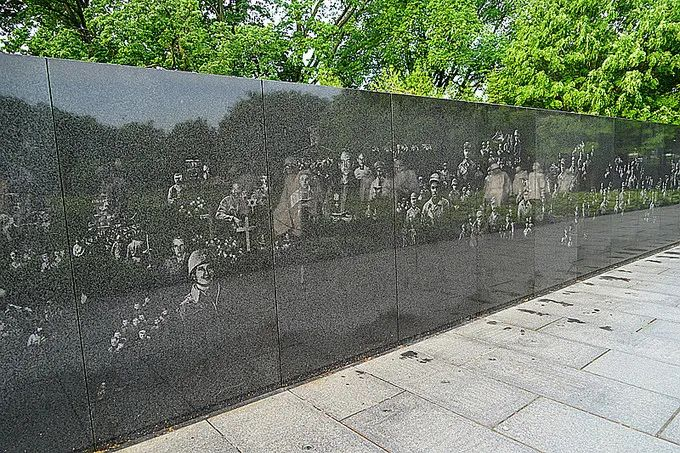
还有一个关键参战方就是当时的苏联,它的空军直接参战了,只是它的飞机和飞行员身上没有苏联的标志。但我在俄罗斯没有看到过朝鲜战争的纪念馆(可能根本就没有吧)。莫斯科的苏联卫国战争纪念馆建造得非常震撼,很值得一看。
中、美、朝、韩,四个朝鲜战争的主要交战方对于这场战争的解读都不相同。关于朝鲜战争的苏联秘密文件早已经解密,当年的决策过程也得以还原。这方面我推荐沈志华教授的文章或演讲。
长津湖只是一个战役,是局部中的局部。我觉得如果电影《长津湖》能引起你对历史的关注,你可以从更大的格局去思考这场战争,而不仅仅是看看现代电影的特效展现出的战争的残酷,或者是电影想要弘扬的某种精神。
以下几点是我认为是关于朝鲜战争应该学习和思考的点,不方便展开细讲,我就简单提示一下:
一是战争起因。朝鲜战争爆发的大背景是美苏冷战,是苏联领导的红色阵营与美国领导的资本主义阵营的斗争,这个斗争在朝鲜半岛变成了一场热战。它是由一个雄心勃勃的、年轻的朝鲜领导人梦想统一半岛发起的。但能得到两个大国的支持,离不开美苏对抗这个大背景,还有中朝两党的特殊关系。
二是决策过程。沈志华教授对决策过程讲得比较清楚,讲到了金太祖几次在苏联和中国领导人之间的外交。但总体来看,作为红色阵营的最高领袖,斯大林才是幕后的决策者。
三是战争结果。朝鲜战争从38线打起,又在38线结束,看上去谁也没有实现自己的战争目标。朝鲜的战争目标是赶走美国,实现统一。麦克阿瑟被仁川登陆胜利冲昏头脑后的目标也是统一朝鲜。战争的结果貌似回到起点,但是中美关系彻底走向了敌对,等斯大林死后中苏翻脸,中国的安全环境就变得极其糟糕。
如果把时间拉得更长的话,看看今天的朝鲜半岛,这场战争的结果还是很令人感叹的。
四是战役目标。长津湖战役是我们精心策划的一场战役,目标是以三个军的兵力消灭美军一个师。但这个目标并没有达成,在付出了惨重的人员伤亡之后,美军成建制地逃出了包围圈,而且提前用飞机运走了几千名伤员。
后来我方才意识到美军的强大,把集中优势兵力消灭美军的目标逐渐降低了,从一个师降到一个团,再降到了一个营,甚至一个连。
美军的强大并不是因为它的军人素质,二战结束后美国大裁军,它的军人作战素质是大幅下降的。志愿军则是直接从解放战争战场投入到朝鲜战场,军人的作战素质相比美军要高。
但美军依靠它强大的武器装备、炮火和后勤保障,在长津湖地区抵挡住了志愿军潮水般的进攻。这是美军钢铁与志愿军血肉之躯的较量。严寒天气给后勤保障极差的志愿军造成了整个连、排被冻死的非战斗减员。看纪录片的时候,我感叹志愿军英勇无比的同时,也感叹战争中的生命之轻。
最后一条,也是最重要的一条的思考题:当今天我们回顾战争、甚至颂扬战争的时候,我们究竟想要达到什么目标?
但愿是追求和平。
Oct 5, 2021
长津湖战役是志愿军进入朝鲜作战的第二次战役中在长津湖地区发起的一场战役,其核心目标是想用突然袭击、分割包围的战术全歼美军王牌军陆战第1师和步兵第7师。但最终的结果是美军顺利突围撤离,中国人民志愿军伤亡惨重。这场战役有一个重要的背景,就是朝鲜率先发动对韩国的侵略战争后,中国志愿军以不宣而战的方式悄悄介入了这场战争,派遣了大量作战力强悍的正规主力部队,以志愿人员的名义,对联合国军发起了大规模突然袭击。长津湖战役,就是这个节骨眼上的关键一战。 真实历史是怎样的?第9兵团入朝时下辖三个军总共约十五万人。由于朝鲜战况紧急,原准备在辽阳、沈阳等地稍事休息并更换御寒棉衣的第9军团,只在沈阳稍停片刻,就继续火速开进。而据称当时部队穿着的都是华东温带的冬季服装,非常单薄,入朝后又遇到了50年一遇的严寒气温,夜间最低温度接近摄氏零下40度,所以才导致了整个战役期间志愿军指战员出现大面积冰冻伤亡。主导长津湖战役的第一主将、中国人民志愿军第9兵团司令兼政委宋时轮,在战役刚刚结束的1950年12月11日,就向中央军委递交了《第9兵团对东线作战的检讨》,宋时轮自己对长津湖战役的结论是这么写的:这次作战打得很不好,不仅未能全歼美陆1师及第7师,反遭巨大减员,严重缩小战力。与此同时,参战的第20、27、26三个军以及各部门也都分别做了检讨。根据党史出版社出版的《开国第一战》披露的数据,第9军团的伤亡数字是“战斗伤亡19,202人,冻伤减员28,954人,冻死1,000人,冻伤严重而不治3,000人。冻伤减员达兵团总数32.1%,严重冻伤达22%。”我们按照九兵团总兵力15万人来计算,官方公开承认冻伤了4.8万人,其中严重冻伤达到3.3万人,直接冻死的就超过4,000人。如此惨重的冻伤减员,的确可以说是触目惊心。
刘伯承元帅在南京军事学院教学时,针对长津湖战役总结了这么一段话:长津湖一战,一个兵团的兵力围住美国陆战第1师,没有能够歼灭,也没有能够击溃,付出了10倍于敌人的代价,让美军全建制地撤出战斗,还带走了所有的伤员和武器装备。《人民网》在2014年的时候,曾经刊登文章,刘伯承元帅在评价长津湖之战时说美军能够全身而退这很了不起。刘伯承提到的一个兵团,就是宋时轮的第9兵团,该兵团总人数约15万人,下属20、26和27三个军都是华东野战军的精锐部队,尤其27军是公认的王牌军。而美军陆战第一师只有2万人左右。实际上,美军不但自己全身而退,还成功掩护了数量高达九万八千余人的朝鲜难民一起撤退。去年11月25日,美国驻华大使馆在纪念长津湖战役70周年的推文中曾经再次提到了这个重要的细节。美陆战一师顺利突围后,美军方一共颁发了17枚荣誉勋章、70枚海军十字勋章,这是美军战史上为一次作战颁发勋章最多的一次。美陆战一师同时也把长津湖之战视为该部队的骄傲,《时代》杂志更称其为“美军历史上无可比拟的……坚忍和勇气的史诗”!好莱坞电影《严寒17日》同样是以长津湖战役为背景,再现了美国战史上这场最艰苦的战役。
参战双方都将长津湖战役视为胜利方,出现这样的历史上战役“双赢”的结局,这就颇耐人寻味。
以上文字作者为:赵进斌
Aug 28, 2017
Jul 28, 2014
Apr 28, 2018
Russia’s Secret War: Stalins’ role in the Korean War 1950-1953 and possible American POW’s in the Soviet Union. BBC Reportage 1996/7/?
诚招美国和加拿大法律服务代理
因公司发展需要,诚招美国和加拿大法律服务代理。
要求:
懂英语、或西班牙语、或法语。
能合法工作有社安号或工号。
无需改行, 可以兼职。
大学生和有销售经验优先考虑。
自雇生意公司发美国报税1099,加拿大T4A
有意了解详情, 请扫码加微信, 非诚勿扰!



